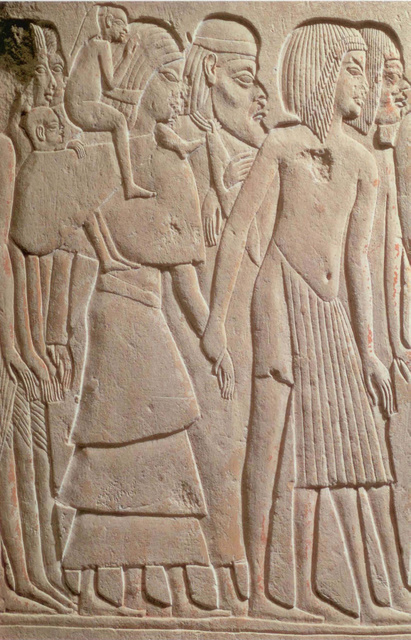African and Syrian captives
The tomb of General Haremhab was one of the first built at southern Saqqara, close to and probably visible from the city of Memphis, after King Tutankhamun’s abandonment of El-Amarna. Haremhab wielded the military power in Egypt during the reign of young Tutankhamun.
His tomb contains scenes of a triumphant parade of captives and booty brought from the Syro-Palestinian region in the north-east and Nubia and other countries in the south. But the veracity of these scenes is open to doubt. They may be artistic creations deemed appropriate for the tomb of Egypt’s commander-in-chief, or may have been made “in anticipation” of such events, or perhaps they broadly reflect real events without aspiring to historical accuracy.
What is not in doubt is that in the scene of recording African prisoners the figures of Egyptian soldiers still belong to the Amarna period. The contrast between the tightly packed group of docile captives and the Egyptians, each of whom is shown very expressively in mid-action, also owes a great deal to the earlier artistic tradition. This is felt less strongly in the scene of a parade of Syrian captives and indicates that this may have been carved by an artist who was able to adapt more quickly to new stylistic requirements.
Museo Civico, Bologna
Malek, Jaromir, Egypt; 4000 years of Art. London- Phaidon Press, 2003.

